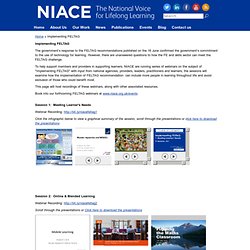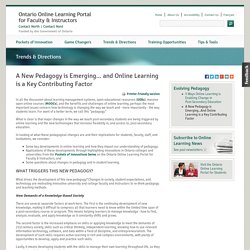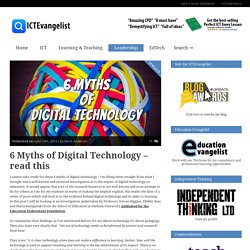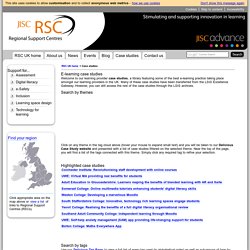

Gmail. Mobile strategies for corporate training: A Handbook. QuestGarden.com. Teacher Training Videos - Free online technology and ict tutorials for use in education. Lincs.ed.gov/publications/pdf/AIR_Digital_Badge_Report_508.pdf. Khan Academy founder talks at TED 2011. How to unlock the potential of digital technology in vocational teaching and learning. 'MOOCs have burst out of higher education into vocational learning. VOOCs have arrived.' Donald Clark, a trustee of the Ufi (University for Industry) Charitable Trust, writes: Yannis is someone I met in Berlin, who literally cried when he completed his first MOOC (Massive Open Online Course).

He talks eloquently about what makes him stay up until 4am doing MOOCs. I’ve also spoken to Innes, a 14-year-old boy, who hated school so much his parents took him out, and has taken several MOOCs. Time and time again, I come across people who have been energised into learning again through MOOCs. None of these people are undergraduates.The MOOC movement is not about replacing universities, it’s about opening up learning for all. Indeed, at the EMOOC (European MOOC) conference in Lausanne last week, the real buzz was about the way MOOCs have burst out of higher education into vocational learning. The data shows that the vast majority of the millions of MOOCers are not undergraduate-age students, but older, life-long learners; people who work in corporates, government and other sectors. Implementing FELTAG. Implementing FELTAG The government’s response to the FELTAG recommendations published on the 16 June confirmed the government’s commitment to the use of technology for learning.

However, there are unanswered questions to how the FE and skills sector can meet the FELTAG challenge. To help support members and providers in supporting learners, NIACE are running series of webinars on the subject of "Implementing FELTAG" with input from national agencies, providers, leaders, practitioners and learners, the sessions will examine how the implementation of FELTAG recommendation can include more people in learning throughout life and avoid exclusion of those who could benefit most.
This page will host recordings of these webinars, along with other associated resources. Book into our forthcoming FELTAG webinars at www.niace.org.uk/events Session 1: Meeting Learner's Needs Webinar Recording: Implementing FELTAG Webinar Series_2. Welcome to Learning Futures - Learning futures. Ufi report - Scaling up: Achieving a breakthrough in adult learning with technology. Learning in a Digital Age - extending higher education opportunities for lifelong learning. View or download the publication (PDF )1.

A New Pedagogy is Emerging...And Online Learning is a Key Contributing Factor. In all the discussion about learning management systems, open educational resources (OERs), massive open online courses (MOOCs), and the benefits and challenges of online learning, perhaps the most important issues concern how technology is changing the way we teach and - more importantly - the way students learn.

For want of a better term, we call this “pedagogy.” What is clear is that major changes in the way we teach post-secondary students are being triggered by online learning and the new technologies that increase flexibility in, and access to, post-secondary education. In looking at what these pedagogical changes are and their implications for students, faculty, staff, and institutions, we consider: What drives the development of this new pedagogy?
Changes in society, student expectations, and technology are motivating innovative university and college faculty and instructors to re-think pedagogy and teaching methods. Using Technology to Enhance Engaged Learning for At-Risk Students. ISSUE: An increasing number of educators are calling for high standards and challenging learning activities for at-risk students.

New technologies can provide meaningful learning experiences for all children, especially those at risk of educational failure. Schools that capitalize on the relationship between technology and education reform will help students to develop higher order skills and to function effectively in the world beyond the classroom. Decoding Learning.
Our Decoding Learning report looks at the impact of digital technology in the classroom.

Key findings. educationendowmentfoundation.org.uk/uploads/pdf/The_Impact_of_Digital_Technologies_on_Learning_FULL_REPORT_(2012).pdf. More pedagogic change in 10 years than last 1000 years: Donald Clark at TEDxGlasgow. tel.ioe.ac.uk/wp-content/uploads/2012/06/TELreport.pdf. 6 Myths of Digital Technology - read this - ICTEvangelist. Research Published on April 14th, 2014 | by Mark Anderson To summarise their findings, as I’ve mentioned before, it’s not about technology, it’s about pedagogy.

Engaging and motivating students. E-learning case studies. Don't show this message again This site uses cookies to allow customisation and to collect anonymous web metrics - how we use cookies Support for...

Find your region Click appropriate area on the map above or view a list of links to Regional Support Centres (RSCs). Self assessment tool for the FE sector. All Primers. Impact of digital technology. Exploring Resources for the Digital Classroom! Online Teaching Ideas. Learn To Teach. E-teaching; from digitally shy to confident with Blackboard Learn; presentation at Blackboard World International Conference 2014. Deep Learning Properties of Good Digital Games How Far Can They Go? How whiteboard video technology works in education. Easy test makers. SAMR Model Explained for Teachers.
Below is a great video explaining the SAMR model in 120 seconds.

SAMR is a framework through which you can assess and evaluate the technology you use in your class. Here is how the video below shared by Candace M explains the SAMR's four levels: Substitution In a substitution level, teachers or students are only using new technology tools to replace old ones, for instance, using Google Docs to replace Microsoft Word. the task ( writing) is the same but the tools are different. Augmentation Though it is a different level, but we are still in the substitution mentality but this time with added functionalities. Again using the example of Google docs, instead of only writing a document and having to manually save it and share it with others, Google Docs provides extra services like auto saving, auto syncing, and auto sharing in the cloud. Watch the video to learn more about SAMR. My Flipped Classroom - Judy Larsen. Create Online Quizzes, Make Assessments, Build Exams.
Delivering online learning: SFA response to FELTAG report. The aim of the Further Education Learning Technology Action Group (FELTAG) was to identify obstacles preventing further education providers taking full advantage of technology.

The group’s recommendations were designed to remove these obstacles, and encourage the further education system towards the digital future expected by learners and employers. This guide shows how the SFA will action the recommendations set out in the government’s FELTAG response. 1. Completing the ILR code The 2014 to 2015 individualised learner record (ILR) includes a field which asks for the proportion of the curriculum design (scheme of work) delivered by computer-mediated activity rather than by a lecturer. 2. FELTAG-REPORT-FINAL.pdf.